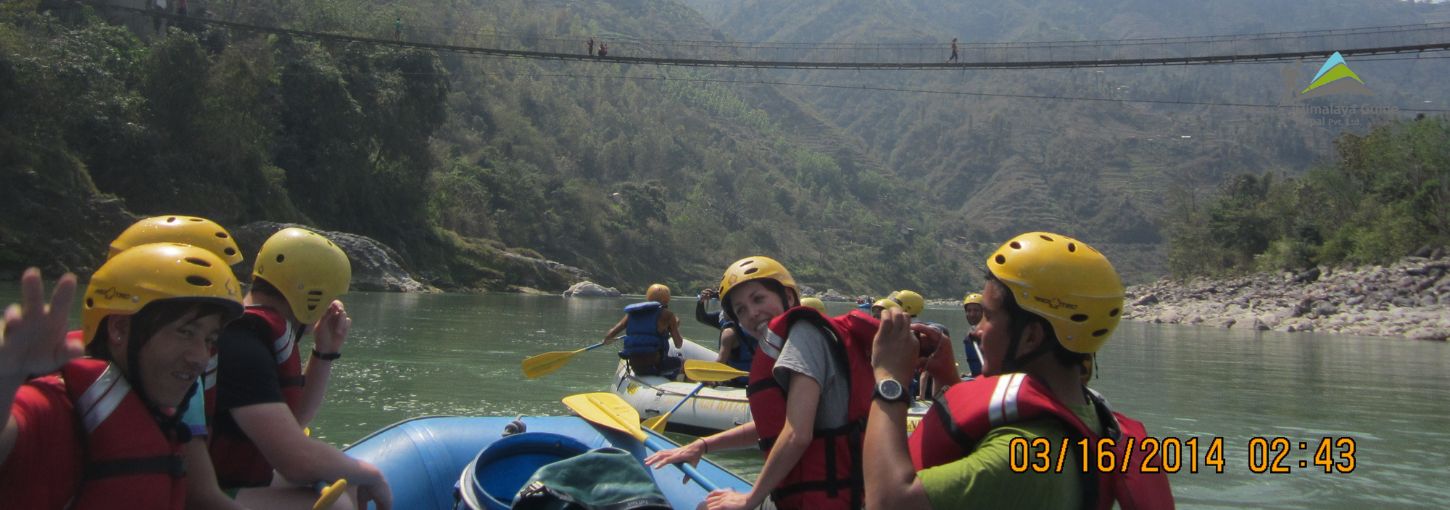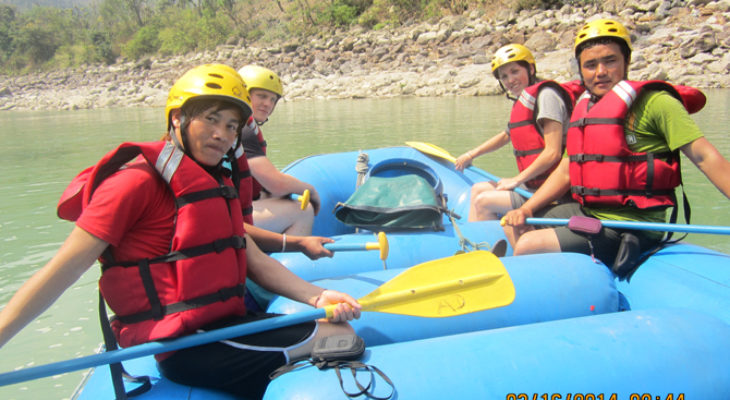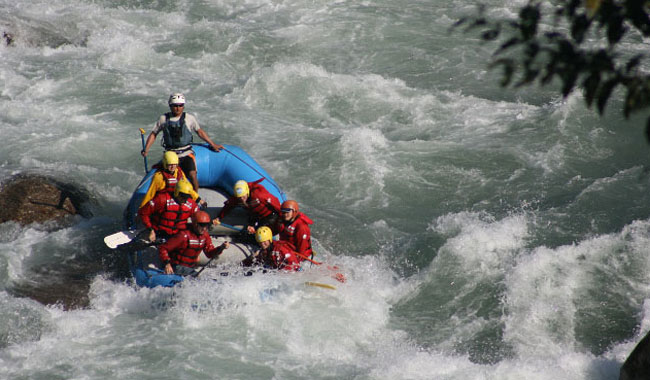
RIVER RAFTING
River Rafting is a popular adventure activity way to see Nepal. While trekking is a good way of seeing the Himalayas, Rafting is an interesting way to see the Terai Region. The Rivers of Nepal rise in the Himalayas glacier, flow into the valley of Kathmandu and Pokhara and finally reach the Tarai. With a wide range of difficulties from a gentle one-day float down the Trishuli River, Bhote Koshi, and Seti River, to an exciting ten-day adventure through the rapids of the remote Tamur, Arun, and Karnali, there is an experience for everyone waiting in Nepal’s famous white waters.
Rafting began in Nepal in 1976. It was started by an American named Al Read, on the Trishuli River they were 2-6 passengers on a raft which is 5 meters long. Nepal has one of the best places in the world for rafting and kayaking.
River Rafting Grade,
Grade 1-2: Easy: – Flatwater, little current, and mild waves.
Grade 3-0: Moderate: – Waves, swift current, and narrow channels, paddling is mostly physical.
Grade 4-5: Difficult: – Powerful water, Constricted channels steep drops and the possibility of overturning a raft padding s challenging and it time strenuous.
Grade 6-0: Very Difficult: - Most Challenging.
What to Carry: –
During autumn (mid-September through November) and spring (March – June).
A day trip, T-shirt, shorts or light cotton trousers, tennis shoes/sneakers, swimsuit, sun hat, and sun goggles with string suntan lotion.
A complete change of clothes includes shoes for the return drive to Kathmandu.
Two-day trip or more in addition to the above you are advised to carry an extra T-shirt, shorts, an extra pair of dry shoes, trousers, and a light wool sweater, etc.
During winter (December through February).
A day trip, warm shirt/ t-shirt, windproof jacket and trousers, tennis shoes/ sneakers.
A complete change of clothes includes shoes for the return drive to Kathmandu.
for the trip involving two days or more, you are advised to carry worm shirts, t-shirts, a heavy woolen sweater (worm clothes), extra pair of dry shoes, and a rouser in addition to the above items.
Note: – you can also carry reading materials, specific medication if required, a camera, binoculars, extra batteries, a memory card, a pocket knife, and a flashlight.


